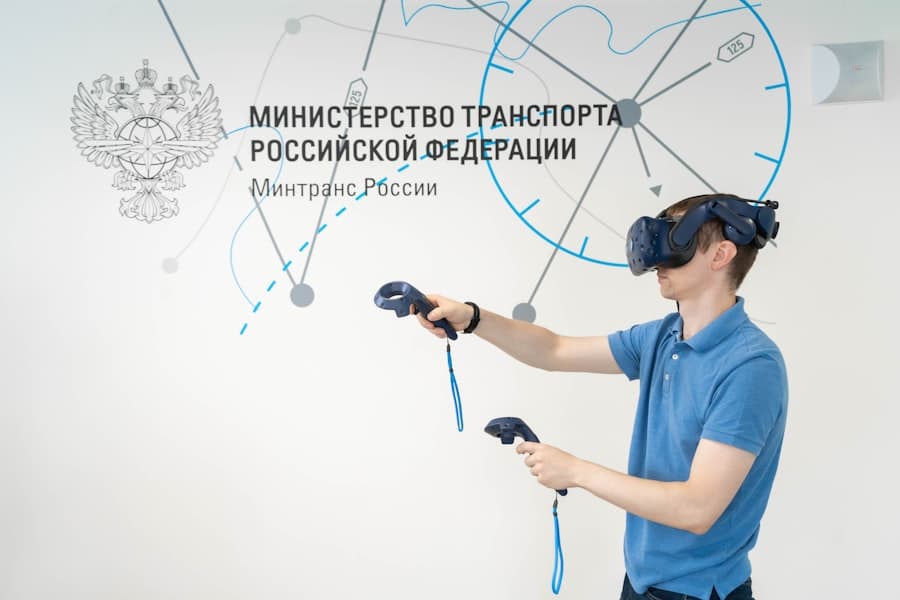The concept of the Metaverse has evolved from a niche idea in science fiction to a burgeoning reality that is reshaping how we interact with digital environments. Initially popularized by works such as Neal Stephenson’s “Snow Crash” and later by films like “Ready Player One,” the Metaverse is envisioned as a collective virtual space where users can engage in a myriad of activities, from socializing and gaming to commerce and education. This digital universe is not confined to a single platform; rather, it encompasses a vast array of interconnected virtual worlds, augmented reality experiences, and immersive environments that allow for real-time interaction among users.
As technology advances, the Metaverse is becoming increasingly accessible, drawing in individuals from diverse backgrounds and interests. The rise of the Metaverse is closely tied to advancements in technology, particularly in virtual reality (VR), augmented reality (AR), and blockchain. These technologies enable the creation of rich, interactive experiences that blur the lines between the physical and digital realms.
As more people seek novel ways to connect and explore, the Metaverse presents an opportunity for innovative forms of engagement. One of the most exciting developments within this digital landscape is the emergence of virtual tourism, which allows users to traverse global destinations without leaving their homes. This phenomenon not only democratizes travel but also opens up new avenues for cultural exchange and understanding.
Key Takeaways
- The metaverse offers a new platform for immersive virtual tourism experiences.
- Virtual reality enables users to explore destinations without physical travel.
- Businesses can leverage virtual tourism for marketing and customer engagement.
- Virtual tourism promotes cultural exchange and enhances cross-cultural understanding.
- Despite its potential, virtual tourism faces challenges like technology limitations and accessibility.
The Rise of Virtual Tourism
Virtual tourism has gained significant traction in recent years, particularly in light of global events that have restricted physical travel. The COVID-19 pandemic served as a catalyst for this trend, as lockdowns and travel bans forced individuals to seek alternative ways to experience the world. Virtual tourism offers a solution by providing immersive experiences that replicate the essence of travel while eliminating the logistical challenges associated with it.
Users can explore famous landmarks, engage with local cultures, and even participate in guided tours—all from the comfort of their own homes. Platforms such as Google Earth VR and various VR travel apps have made it possible for users to visit iconic sites like the Eiffel Tower or the Great Wall of China with just a headset. These experiences often include high-definition visuals, 360-degree views, and interactive elements that enhance user engagement.
Moreover, virtual tourism is not limited to passive observation; it encourages active participation through activities such as virtual hiking, cooking classes, or cultural workshops. This shift towards experiential learning allows travelers to gain insights into different cultures and lifestyles without the constraints of time or geography.
Exploring New Destinations in the Metaverse

The Metaverse offers an expansive canvas for exploring new destinations that may not be easily accessible in the physical world. Users can traverse fantastical landscapes that blend elements of reality with imagination, creating unique experiences that challenge traditional notions of travel. For instance, platforms like Decentraland and Second Life allow users to create and inhabit virtual spaces that reflect their creativity and aspirations.
These environments can range from meticulously recreated historical sites to entirely fictional realms where users can engage in activities that defy the laws of physics. In addition to imaginative destinations, the Metaverse also provides opportunities for users to explore lesser-known locations that may not receive attention in conventional tourism. Virtual tours can spotlight hidden gems—such as remote villages or natural wonders—that are often overlooked by mainstream travel guides.
By showcasing these unique locales, virtual tourism can foster a greater appreciation for diverse cultures and environments, encouraging users to consider them for future physical visits. This exploration can also serve as a bridge for real-world tourism, as individuals who experience a destination virtually may be inspired to visit in person once travel restrictions ease.
Virtual Reality and Immersive Experiences
At the heart of virtual tourism lies virtual reality technology, which creates immersive experiences that transport users into lifelike environments. VR headsets such as Oculus Rift, HTC Vive, and PlayStation VR enable users to engage with their surroundings in ways that traditional media cannot replicate. The sensation of presence—feeling as though one is truly “there”—is a hallmark of VR experiences, making them particularly effective for virtual tourism.
Immersive experiences in virtual tourism often incorporate elements such as spatial audio, haptic feedback, and interactive storytelling to enhance user engagement. For example, a virtual tour of an ancient ruin might include ambient sounds of nature or historical reenactments that provide context and depth to the experience. Users can interact with objects within these environments, such as picking up artifacts or participating in local customs, which further enriches their understanding of the culture being represented.
This level of interactivity not only captivates users but also fosters a deeper emotional connection to the places they explore.
Opportunities for Businesses in Virtual Tourism
The rise of virtual tourism presents numerous opportunities for businesses looking to capitalize on this emerging market. Travel agencies, tour operators, and hospitality companies can leverage virtual experiences to attract customers who may be hesitant to travel physically due to safety concerns or financial constraints. By offering virtual tours or experiences as part of their service portfolio, businesses can engage potential travelers and provide them with a taste of what they can expect when they eventually visit in person.
Moreover, businesses can create partnerships with content creators and technology providers to develop unique virtual experiences that showcase their offerings.
This approach not only enhances brand visibility but also allows businesses to build relationships with customers before they make a commitment to travel.
Additionally, as more people become accustomed to virtual experiences, businesses can explore monetization strategies such as subscription models or pay-per-experience options.
Cultural Exchange and Cross-Cultural Understanding

One of the most profound benefits of virtual tourism is its potential to facilitate cultural exchange and promote cross-cultural understanding. By providing access to diverse cultures and traditions from around the world, virtual tourism encourages users to engage with perspectives that differ from their own. This exposure can foster empathy and appreciation for cultural diversity, breaking down barriers that often exist in traditional tourism.
Virtual experiences can include guided tours led by local experts who share insights about their culture, history, and daily life. For example, a virtual tour of a traditional Japanese tea ceremony might include commentary from a tea master who explains the significance of each step in the process. Such interactions allow users to gain a deeper understanding of cultural practices and values while also providing a platform for local voices to be heard.
This exchange not only enriches the user experience but also empowers communities by showcasing their heritage on a global stage.
Challenges and Limitations of Virtual Tourism in the Metaverse
Despite its many advantages, virtual tourism in the Metaverse is not without challenges and limitations. One significant hurdle is the technological divide; not everyone has access to high-quality VR equipment or reliable internet connections necessary for immersive experiences. This disparity can create barriers for individuals who may benefit from virtual tourism but lack the resources to participate fully.
As a result, there is a risk that virtual tourism could inadvertently reinforce existing inequalities rather than democratize access to travel experiences. Additionally, while virtual tourism offers unique opportunities for exploration, it cannot fully replicate the sensory richness of physical travel. The sights, sounds, smells, and tactile sensations experienced during real-world travel contribute significantly to the overall experience; these elements are often difficult to convey through digital mediums alone.
Furthermore, there are concerns about the potential for cultural appropriation or misrepresentation within virtual environments. As creators design experiences based on real cultures, it is essential to approach these representations with sensitivity and respect to avoid perpetuating stereotypes or inaccuracies.
The Future of Virtual Tourism and the Metaverse
Looking ahead, the future of virtual tourism within the Metaverse appears promising yet complex. As technology continues to advance—particularly in areas such as artificial intelligence (AI), machine learning, and 5G connectivity—the potential for creating even more immersive and interactive experiences will expand significantly. Future developments may include hyper-realistic simulations that incorporate real-time weather changes or user-generated content that allows travelers to shape their own experiences within virtual environments.
Moreover, as societal attitudes towards travel evolve—especially in light of environmental concerns—virtual tourism may play an increasingly vital role in promoting sustainable practices within the industry. By offering alternatives to physical travel, virtual tourism can help reduce carbon footprints while still allowing individuals to explore new cultures and destinations. As businesses adapt to this changing landscape, they will need to embrace innovation and prioritize inclusivity to ensure that virtual tourism remains accessible and enriching for all users.
In conclusion, while challenges remain on the horizon, the potential for virtual tourism within the Metaverse is vast and multifaceted. As we continue to navigate this digital frontier, it will be essential to balance technological advancements with ethical considerations and cultural sensitivity to create meaningful experiences that resonate with users around the globe.
As virtual tourism continues to expand through the metaverse, it is essential for creators and travelers alike to have the right tools at their disposal.
You can find a comprehensive guide on this topic in the article The Best Laptops for Video and Photo Editing. This resource will help you choose the perfect device to capture and share your virtual adventures.
FAQs
What is virtual tourism?
Virtual tourism refers to the use of digital technology to explore and experience travel destinations remotely, often through virtual reality (VR), augmented reality (AR), or 360-degree video tours.
How does the metaverse enhance virtual tourism?
The metaverse provides an immersive, interactive 3D environment where users can explore virtual recreations of real-world locations or entirely fictional destinations, enabling a more engaging and social virtual tourism experience.
What technologies are involved in virtual tourism within the metaverse?
Key technologies include virtual reality headsets, augmented reality devices, 3D modeling, blockchain for digital ownership, and high-speed internet to support real-time interactions and detailed virtual environments.
Can virtual tourism replace physical travel?
While virtual tourism offers accessible and cost-effective experiences, it currently complements rather than replaces physical travel, providing opportunities for previewing destinations or exploring places that are difficult to visit in person.
What are the benefits of virtual tourism in the metaverse?
Benefits include increased accessibility for people with mobility or financial constraints, environmental sustainability by reducing travel emissions, educational opportunities, and the ability to experience unique or remote locations virtually.
Are there any limitations to virtual tourism in the metaverse?
Limitations include the need for advanced technology and internet access, potential lack of sensory experiences like taste and smell, and the current gap between virtual and real-world authenticity.
How do businesses use virtual tourism in the metaverse?
Businesses use virtual tourism to market destinations, offer virtual tours, create interactive travel experiences, and engage customers through immersive storytelling and social interactions within the metaverse.
Is virtual tourism in the metaverse accessible to everyone?
Access depends on having compatible devices and internet connectivity, which may limit availability in some regions or among certain populations, though ongoing technological advancements aim to improve accessibility.
What role does social interaction play in metaverse virtual tourism?
Social interaction allows users to explore destinations together, share experiences in real-time, attend virtual events, and connect with guides or other tourists, enhancing the overall engagement and enjoyment.
How is virtual tourism expected to evolve with the metaverse?
Virtual tourism is expected to become more immersive, personalized, and interactive, integrating AI, improved graphics, and seamless social features to create richer and more realistic travel experiences.

